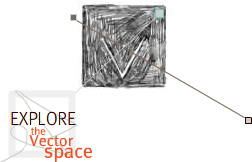The RED Project
Rendering Electromagnetic Distributions
Producer's Statement
In the week that this project appears in Vectors, a consortium of major technology companies (including Microsoft, Intel, and Google) called the "White Spaces Coalition" is in the news asking for more access to the electromagnetic spectrum in the US without the need to obtain a license in advance. Recent debates about the spectrum have animated a growing collection of research and public interest campaigns with titles like the Wireless Future Program, Open Spectrum UK, Save Our Spectrum, and Open Spectrum International. The advocacy group Article 19 recently argued that spectrum reform is fundamentally an issue of human rights. For many of these spectrum partisans, the underlying ideal is a future where all of society's wireless communications can be digitally reorganized so that no one who wants to be heard will ever need the government's permission. In some cases, they see a future where no one will need to pay for access to the spectrum.
Even those that wholeheartedly embrace these ideals aren't sure how they will work. The RED Project is an attempt to reason about this possibility of a decentralized, unlicensed wireless future. It brings together an unusual group that included a documentary photographer, geographers, computer scientists, communication scholars, and policy experts. We started this project by asking, how do people communicate without licenses right now? After four years of work examining Wi-Fi, we found that this particular area of research kept leading back to fundamental questions about our concept of human communication. That is, who communicates and why? The difference between the neighborhoods that we measured have often been surprising, as I think our tour will show. Our project's form (a web-based mapserver) also forced us to ask basic questions about how invisible things should be seen and represented.
Alongside these large questions this project has fielded an extravagance of small ones. All of the work here rests on the shoulders of students and volunteers who drove over 300 miles on each research trip to measure wireless signals so that we could visualize and think about them. They struggled with unusual equipment, with the Chicago weather, and with inaccurate maps. They had regular conversations with the police. (After the first year, I wrote and laminated an official-looking letter explaining that the bearers of our strange wireless devices were not terrorists, and I attached it to the wireless rig with a twist-tie.)
The moment of wireless excitement within which this project fits seems refreshingly new. Yet it is strongly evocative of the controversial introduction of spectrum auctions two decades ago, and even of the struggle to work out the first principles of society's system for organizing wireless communication eight decades ago. The stakes remain high. As the late Dallas Smythe wrote, "no other resource has this order of political significance." "The control of the use of the radio spectrum lies close to the seat of sovereignty in the nation state...[yet] title to the radio spectrum rests not with individuals or nations but in all humanity."



